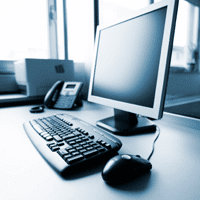
Saving Energy With Personal Computers
Computers and computer monitors can use lots of energy, especially if they’re on all the time and running at full speed, even when you’re not using them. In order to start saving energy and reducing electric bill costs use your computer’s power management features to put your computer and its monitor in an energy-saving mode, or just shut them down completely.
Saving Energy by Putting Your Computer and Monitor to Sleep
All modern computer operating systems including Windows, Mac OS, Linux, and a few others can be placed in an energy-saving mode known as sleep. Each operating system, while slightly different with regard to where you might find the sleep settings, essentially offers several ways to save electricity by putting CPUs, hard drives, and monitors to bed when you don’t actively use them for a set period of time.
Here are a few things to keep in mind when setting up your computer’s energy-saving features:
– According to the U.S. Department of Energy, an ENERGY STAR certified computer consumes 15 watts or less when sleeping, which is about 70 percent less than when the same computer is running without the operating system’s power management features turned on.
– Monitors certified by ENERGY STAR have two successive sleep modes. The first mode cuts power consumption to 15 watts or less, or about 20 percent of the electricity the monitor normally uses. The second mode cuts consumption even further, to 8 watts, or less than 10 percent of the electricity the monitor normally uses.
– A good rule of thumb might be to set the monitor to sleep after five minutes of inactivity and set the computer to sleep after ten minutes.
– Whether you set the hard drive to sleep when you’re not using it is largely an issue of convenience. If you dont mind waiting for a second or two for it to spin up every now and then, letting the hard drive sleep might be able to save you a little energy and lengthen the life of the hard drive.
Turning Off Your Computer Instead of Putting it to Sleep
It used to be hard on computers to frequently shut them down and start them up again, but those days are long gone. Now, a computer will be put out to pasture from advances in technology and increased demands of software well before turning it on and off can harm it.
If youre not going to be using your computer for a while, the Energy Department recommends that you use your computers power management features to turn it off completely instead of putting it to sleep:
– Set your monitor to turn off after 20 minutes of inactivity.
– Set your computer to turn off after 2 hours of inactivity.
Finally, make sure your computer power cord and all of your peripherals monitor, printer, scanner, etc. are plugged into a power strip. That way, when you’re going to be away from your computer for a while like if you’re at work or going out of town, you can turn off the switch to kill any energy vampires that are hanging around.
(Source: Energy Savers website, When to Turn Off Personal Computers.”)



